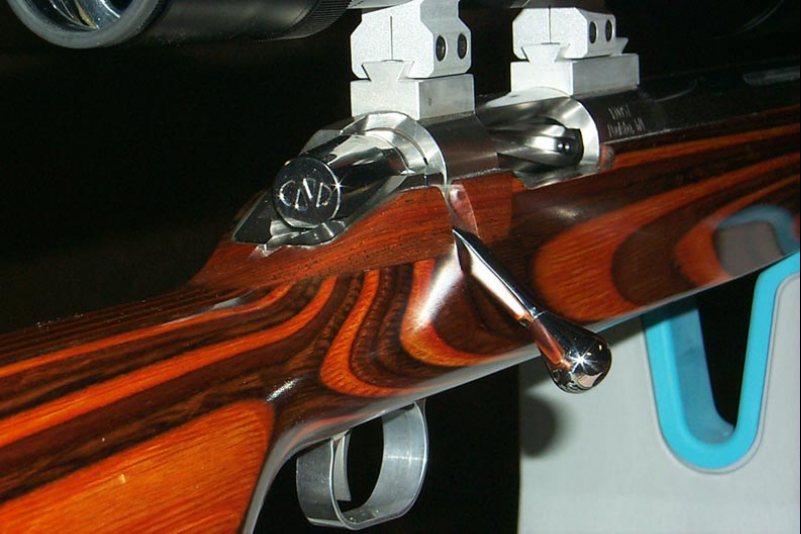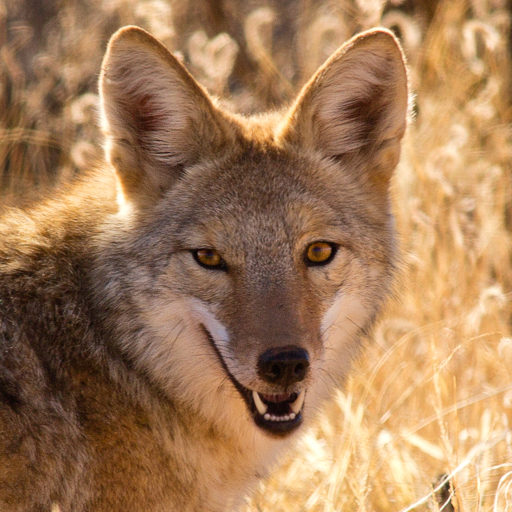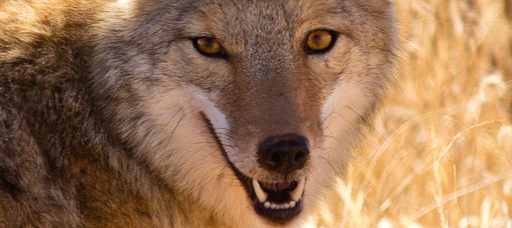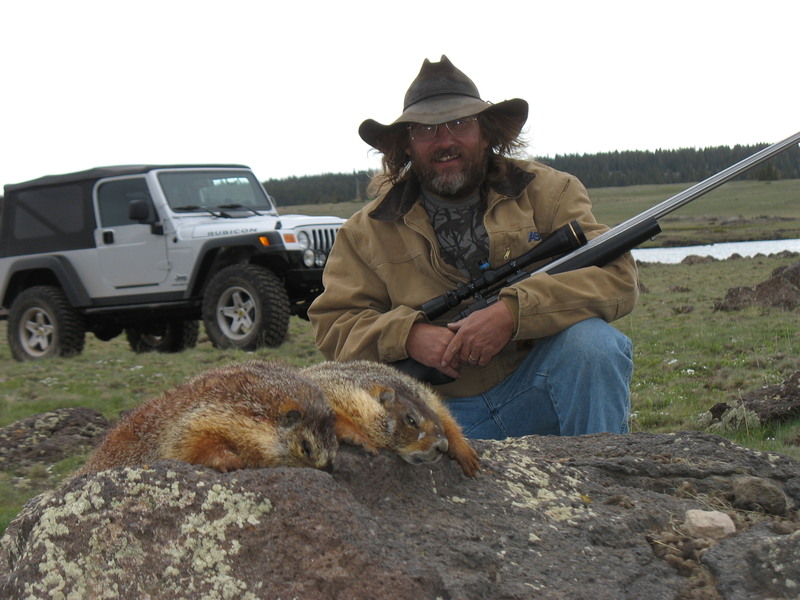MPBR, a brief explanation
by Dave Affleck
Since writing about the extended MPBR achieved with my .17 Predator and .20-250 projects, I’ve received a few emails and private messages lately asking for clarification regarding exactly what MPBR is and why I choose to use it. So I decided to put my answers into a short article to post here for future reference.
MPBR stands for Maximum Point Blank Range. Simply put, MPBR is the furthest distance you can zero your rifle for, at which your bullet is never above or below your line of sight by more than a certain amount. The idea being that you can then aim at the center of the target from the muzzle to the MPBR distance without concern for holding over. The size of your intended target should determine the distance you decide to allow above or below your line of sight. For all of my varmint rifles, I use a target size of 4” to determine MPBR. So I zero my varmint rifles to have the bullet not rise to more than 2” above my line of sight. The point at which the bullet then drops to 2” below my line of sight is the MPBR for that rifle and that particular load.
One description of the MPBR concept that has been used a lot over the years is to visualize shooting with your barrel centered inside an imaginary pipe. The target size determines the size of the pipe – in the case of all my varmint rifles it would be a 4” pipe. MPBR is the furthest distance at which a bullet fired from your rifle will stay inside the pipe without hitting the top or the bottom.
Most ballistics software programs will calculate MPBR for any given bullet and velocity. If you don’t have your own ballistics software program, there are excellent calculators available to use for free at the JBM Ballistics website. To get the most accurate results from any ballistics calculator, it’s important to input the variables as precisely as possible. Aside from the obvious velocity and B.C. variables, one of the variables that will have the most effect on getting an accurate MPBR calculation is sight height – the distance between the centerline of the barrel and the centerline of the scope. Altitude above sea level is another variable that will have a measurable effect on the accuracy of the calculations. I have found that when all of the variables are input correctly into the software, these programs give very accurate results. But one should still go out and do some actual shooting to verify results, just to be sure.
Below is a trajectory table to illustrate a MPBR zero. The example used is a .22-250, shooting a 50 gr. Vmax at 3700 fps. A typical example of a fairly flat shooting factory rifle. This table was calculated using the JBM calculator linked above.
| Calculated Table MPBR | ||||||||||
| Range (yds) | 50 | 100 | 150 | 200 | 250 | 300 | 350 | |||
| Drop (in) | 0.4 | 1.6 | 2 | 1.5 | -0.2 | -3 | -7.3 | |||
The MPBR for the above example is 284 yards, with a 246 yard zero. In other words, when the rifle is zeroed to be dead on at 246 yards, the bullet will never be more than 2” above or 2” below your line of sight clear out to 284 yards. And the bullet will be only 3 inches low at 300 yards. Essentially allowing one to hold the same point of aim on a coyote sized animal from the muzzle to 300 yards. As shown in the chart, to achieve this zero you could sight in to be 1.6 inches high at 100 yards. Again though, you should always test your longer range zero if possible.
So, now we have defined what MPBR is and how to zero a rifle for MPBR. The next logical question, one I have received in emails, is “why use MPBR?”. I can only give the reasons that I use MPBR zeroes on all my rifles. But before I do, I want to point out that there is no right or wrong here. Many people simply don’t like to use MPBR zeroes, for their own reasons. That’s fine. People should use whatever zeroing system they are comfortable with, and that gives them the best results. I have been using the MPBR concept to zero my scoped rifles my whole life. Literally, every scoped rifle I have ever owned, since childhood, has been zeroed using the MPBR concept. That’s the way my Dad taught me to do it (and he’s been using MPBR on all his scoped rifles since the 1950’s). So, I’m just extremely comfortable with the system, and frankly I’ve just never experienced any of the potential problems associated with it that are occasionally reported. However, I have observed over the years that often when a guy who has been using a 100 yard zero for a long time, switches to a MPBR zero, he may have a tendency to shoot over the backs of animals. More than once, I’ve seen someone accustomed to using a 100 yard zero, struggling to get used to using a MPBR zero without shooting over. This is why I say that there is no right or wrong answer here, just use the zero that makes the most sense to you.
But why do I choose to use the MPBR zeroing method on all my rifles? To me MPBR just makes too much sense not to use it. I’ll use the same example as above to try and explain; a .22-250 shooting a 50 gr. bullet at 3700 fps. If this rifle were zeroed to be “dead on” at 100 yards, then it would be hitting almost 2 inches low at only 200 yards and 8 inches low at 300 yards. Below is the same MPBR trajectory chart as above, plus a trajectory chart for the same rifle using a 100 yard zero.
|
||||||||||||||||||||||||||||||||||||||||||||||||||||||||||
As you can see, both zeros keep the bullet within 2” of your line of sight out to about 200 yards. But as the range increases beyond 200 yards, the MPBR zero continues to keep the bullet within that same 2” of your line of sight for nearly another 100 yards. While the with the 100 yard zero the bullet drops below that 2” zone almost immediately beyond 200 yards and starts dropping like a rock from there.
So with the 100 yard zero, at any distance beyond about 210 yards, the bullet is hitting more than 2” low of the aim point and some adjustment in aiming/sight picture (“hold over”) will have to be used in order to make a good hit. As the distance increases further, the bullet really starts to hitting lower and lower in a hurry. By the time the bullet gets out to about 300 yards, not only am I going to have to use hold over to make a good hit, but I better be pretty accurate in my range estimation and my hold over calculation to boot. Since the bullet is dropping so fast at that range, small errors in range estimation or hold over calculation can quickly result in large aiming errors. So, to make a clean kill on a coyote at say 270 yards, I’m going to have to make an accurate estimation of the range, make an accurate calculation of the needed hold over and then hold over accurately by the correct amount. Any error in any of these things and I’ve got a miss or worse, a bad hit. Sheesh… Sounds like a lot of totally unnecessary chances to screw things up to me! By contrast, using the MPBR zero for this same rifle, to make that same shot at 270 yards, all I do is hold the exact same sight picture that I would at any other distance between the muzzle and the MPBR or 284 yards. No thought process, range estimation, hold over calculation or accurate hold over aiming required. Rather, just point and shoot, same as every other shot. Increase the distance just slightly more, to 300 yards, and the factors of range and hold over estimation become so critical with a 100 yard zero that a 25 yard range estimation error will result in the bullet hitting well off from the intended mark. Using the MPBR zero, on a 300 yard shot, the bullet is only impacting 3 inches low – if you guessed off by 25 yards either way, you are still likely to score a good hit.
So, to me, it just doesn’t make any sense to take a flat shooting rifle like a .22-250, and then zero it dead on for 100 yards, and therefore have to worry about all that junk like range estimation and hold over starting at only 200 yards. When I could just use the MPBR zero instead, and simply not worry about exact range or holding over on any coyotes within the MPBR distance – which is 95% of all the coyotes I ever shoot at. This becomes even more of a no-brainer when dealing with really flat shooting cartridges like the .17 Predator or .20-250 which have MPBR’s of 350 yards or more on 4” targets. To me, using a 100 yard zero on a rifle like this is like buying a Corvette and putting a speed limiter on it to prevent going over 65 MPH.
But, like I said earlier, to each his own! I’m really not out to try and convince anyone to change zeroing method. If you are a shooter that prefers a 100 yard zero, and it works for you, then more power to you! Use what you are comfortable with and what gives you the results you desire. For me though, that always has been and is always going to be the MPBR zero.
– Dave Affleck




Thanks for the information about how you zero.
Too much to discuss on a place like this.
Ive been hunting long range over 50 years from our camp in N C PA.
We dial for the most part due to distance of most shots.
Zero distance is simply a known place to return to, but most use 100 yds due to range facilities.
We use much larger cartridges with high velocity for that also.
Never hunted coyotes, and at this point in my life i probably wont.
Have hunted prairie dogs in Montana several times.
When doing that i dont dial, too much wasted time. I just zero on a dog at what i think max for the gun for holding up or down without dialing. I use a 223, a 22/250ai and a 6×284 for that.
I use 55 gr, 69 gr, and 105 gr.
So im probably doing pretty much what you are on the dog hunting.
Also have several older Leupold scopes from before dials were being offered. Early 80s is when that happened. Those have custom multi dot reticles out to 1000 yds, programed on the velocity and BC of the bullet. I use those on 7×300 Wetherby wildcats. 300 Wby case necked down to 7mm. Using a 162 gr match Hornady velocity is about 3400. Those guns are built on Rem 700 actions.
Also use a 300 Norma, and a large case 338.
Do you use a local gunsmith?
I see one of your guns has a barrel nut, assuming a Savage action with a custom barrel?
Also see your Jeep unlimited Rubicon?
I recently sold my 2006 unlimited Rubicon with 67.000 miles on it.
It was my hunting rig, had a 12000 # Warn winch on it.
We also use large tripod mounted binoculars for glassing, mostly made up by using 2 spotting scopes in custom made adjustable brackets.
They are our most necessary piece of equipment.
We shoot from custom made portable benches or very good shooting tripods.
Gun weight wouldnt permit the type you use.
A deer simply cant run fast enough in whatever direction that we cant stay right on it with our setup.